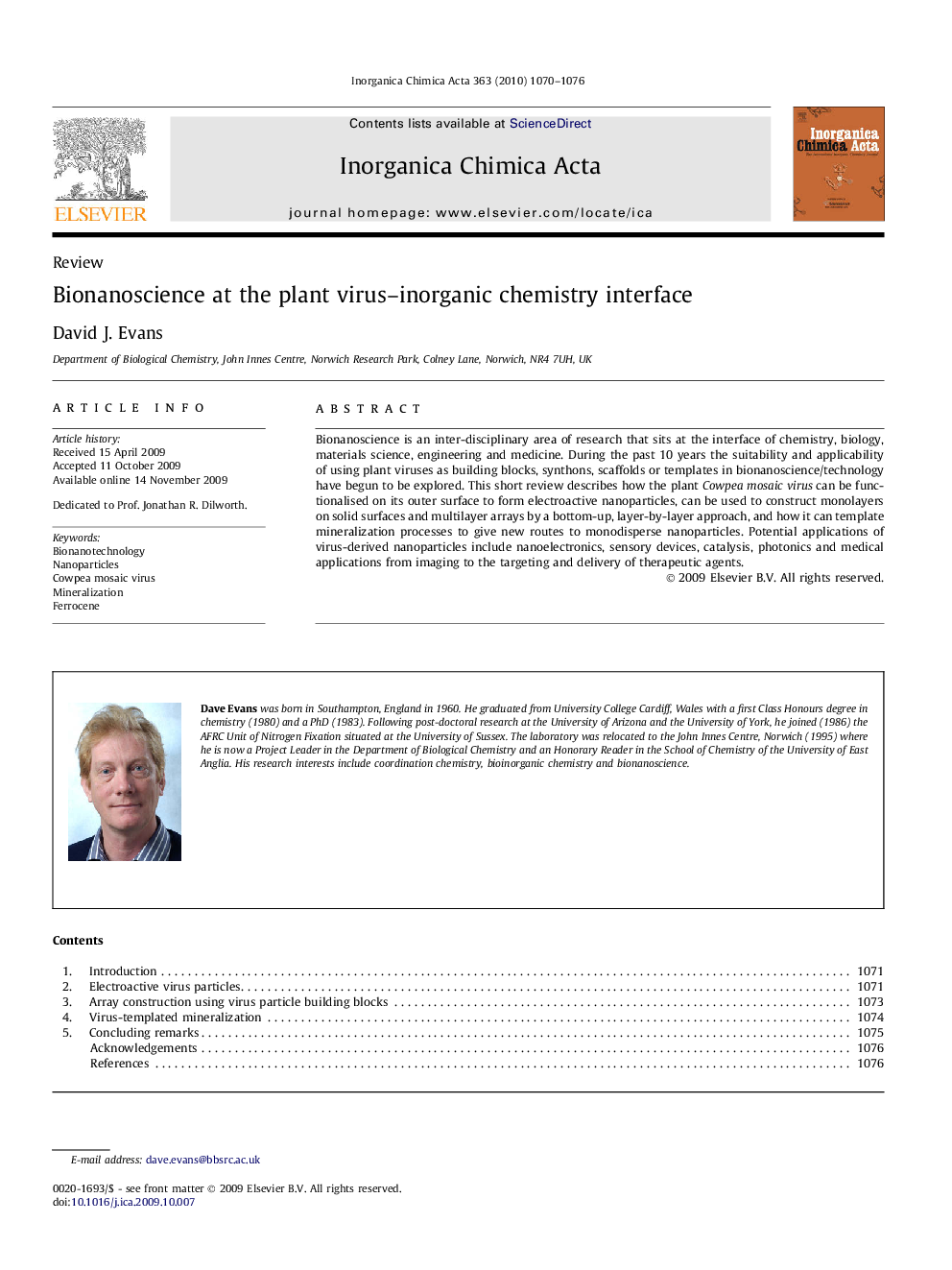| Article ID | Journal | Published Year | Pages | File Type |
|---|---|---|---|---|
| 1312597 | Inorganica Chimica Acta | 2010 | 7 Pages |
Bionanoscience is an inter-disciplinary area of research that sits at the interface of chemistry, biology, materials science, engineering and medicine. During the past 10 years the suitability and applicability of using plant viruses as building blocks, synthons, scaffolds or templates in bionanoscience/technology have begun to be explored. This short review describes how the plant Cowpea mosaic virus can be functionalised on its outer surface to form electroactive nanoparticles, can be used to construct monolayers on solid surfaces and multilayer arrays by a bottom-up, layer-by-layer approach, and how it can template mineralization processes to give new routes to monodisperse nanoparticles. Potential applications of virus-derived nanoparticles include nanoelectronics, sensory devices, catalysis, photonics and medical applications from imaging to the targeting and delivery of therapeutic agents.
Graphical abstractPlant viruses, such as Cowpea mosaic virus, are versatile building blocks, synthons, scaffolds or templates for exploitation in bionanoscience. They can be functionalised with a range of molecules, including those of inorganic or organometallic origin, and their external surface can be mineralized to give new routes to monodisperse nanoparticles.Figure optionsDownload full-size imageDownload as PowerPoint slide
